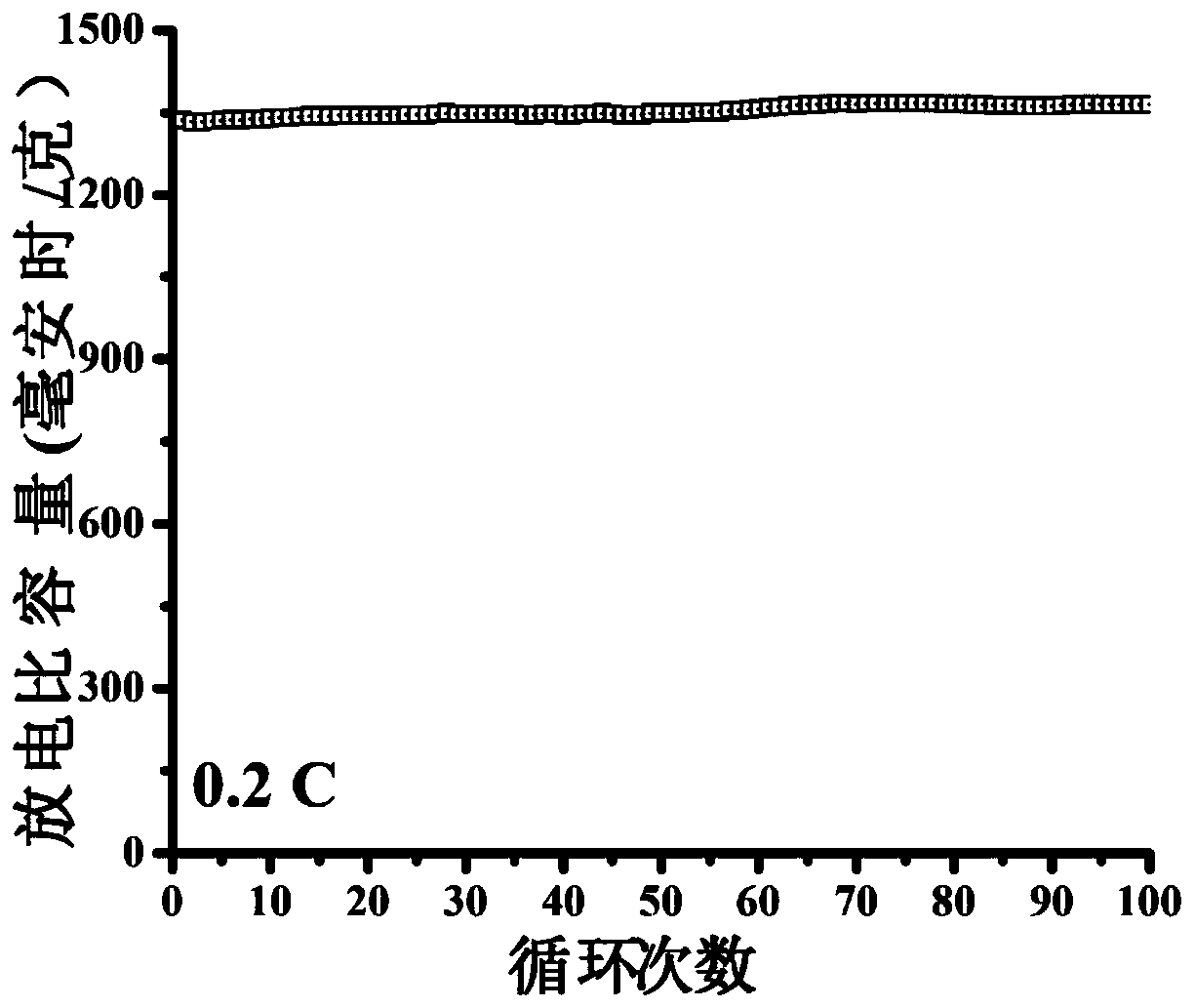Preparation method of modified carbon nanofiber lithium-sulfur battery positive electrode material
A lithium-sulfur battery and nanofiber technology, applied in the field of material chemistry, can solve the problems of obvious shuttle effect, low sulfur loading, poor cycle stability, etc., and achieve the effects of good uniformity, high porosity, and enhanced conductivity.
- Summary
- Abstract
- Description
- Claims
- Application Information
AI Technical Summary
Problems solved by technology
Method used
Image
Examples
Embodiment 1
[0025] The first step is to prepare the sheet-like structure composite precursor material:
[0026] 1.5 g of polyacrylonitrile and 3 g of cobalt acetate were placed in 15 mL of N,N-dimethylformamide, stirred for 12 hours, and composite nanofibers were prepared by electrospinning. After being torn off from the tin foil for electrospinning, it was first placed in a muffle furnace, and the temperature was raised to 300°C at a heating rate of 2°C / min, and kept for 2h. After cooling with the furnace, it was transferred to a tube furnace, and the temperature was raised to 700 °C under an argon atmosphere at a heating rate of 2 °C / min. After the heating was completed, it was kept for 2 hours, and naturally cooled to obtain a sheet-like structure composite precursor material.
[0027] The second step prepares cobalt nitride-cobalt tetroxide-carbon nanofiber composite material:
[0028] Put 0.3 g of the sheet-like composite precursor material prepared in the first step in a tube furna...
Embodiment 2
[0032] The first step is to prepare the sheet-like structure composite precursor material:
[0033] Take 2g of polyacrylonitrile and 5g of cobalt acetate in 20mL of N,N-dimethylformamide, stir for 24 hours and then prepare composite nanofibers by electrospinning. After being torn off from the tin foil for electrospinning, it was first placed in a muffle furnace, and the temperature was raised to 400°C at a heating rate of 5°C / min, and kept for 2h. Then cool with the furnace, transfer it to a tube furnace, raise the temperature to 800 °C in an argon atmosphere, the heating rate is 5 °C / min, keep warm for 2 h after the heating is completed, and then naturally cool to obtain a composite precursor material with a sheet structure.
[0034] The second step prepares cobalt nitride-cobalt tetroxide-carbon nanofiber composite material:
[0035] Put 0.3 g of the sheet-like composite precursor material prepared in the first step into a tube furnace, and raise the temperature to 600 °C u...
Embodiment 3
[0039] The first step is to prepare the sheet-like structure composite precursor material:
[0040]1 g of polyacrylonitrile and 1 g of cobalt acetate were placed in 10 mL of N,N-dimethylformamide, stirred for 12 hours, and composite nanofibers were prepared by electrospinning. After being torn off from the tin foil for electrospinning, it was first placed in a muffle furnace, and the temperature was raised to 200°C at a heating rate of 1°C / min, and kept for 1h. With the furnace cooling, it was transferred to a tube furnace, and the temperature was raised to 600 °C in an argon atmosphere at a heating rate of 1 °C / min. After the heating was completed, it was kept for 1 h, and then naturally cooled to obtain a composite precursor material with a sheet structure.
[0041] The second step prepares cobalt nitride-cobalt tetroxide-carbon nanofiber composite material:
[0042] Put 1 g of the sheet-like composite precursor material prepared in the first step in a tube furnace, and rai...
PUM
 Login to View More
Login to View More Abstract
Description
Claims
Application Information
 Login to View More
Login to View More - R&D
- Intellectual Property
- Life Sciences
- Materials
- Tech Scout
- Unparalleled Data Quality
- Higher Quality Content
- 60% Fewer Hallucinations
Browse by: Latest US Patents, China's latest patents, Technical Efficacy Thesaurus, Application Domain, Technology Topic, Popular Technical Reports.
© 2025 PatSnap. All rights reserved.Legal|Privacy policy|Modern Slavery Act Transparency Statement|Sitemap|About US| Contact US: help@patsnap.com

